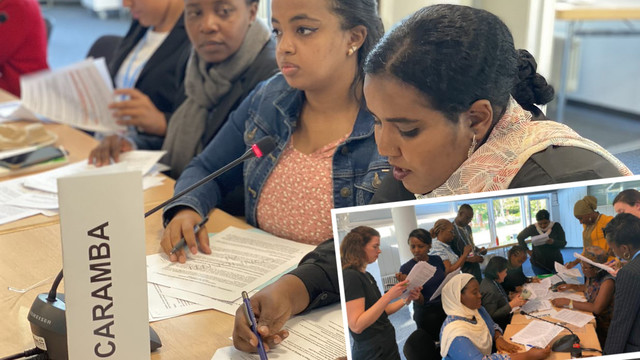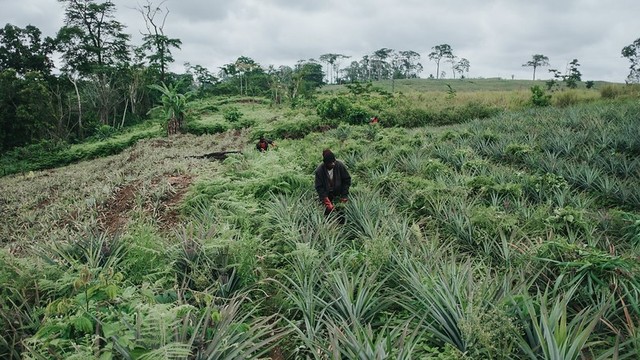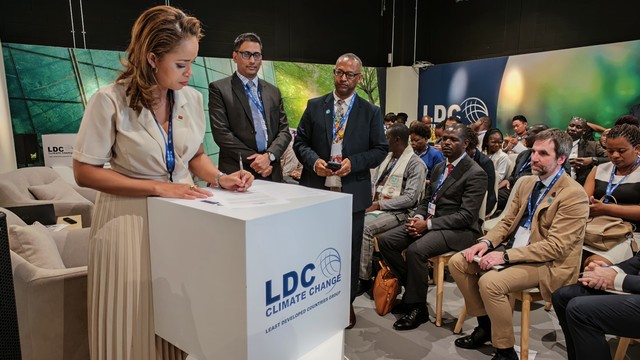A 1.5 degree goal could save us from ourselves
As climate negotiations continue in Bonn this week, Stephanie Andrei and Saleemul Huq argue that it would be in everyone's interest to strengthen the target for limiting global temperature rise to 1.5 degrees.



International climate negotiations in Bonn, Germany. Delegates from nearly 200 countries are preparing the text for a global climate deal to be negotiated at the United Nations Climate Change Conference in Paris later this year (Photo: UNclimatechange, CC BY 2.0)
Expert scientific opinion is clear that a stronger global target for limiting temperature rise would significantly reduce the risks from climate change to vulnerable and marginal groups. Yet as negotiators meet in Bonn to finalise details for the proposed Paris climate agreement in December this year, one of the challenges seems to be in recognising this scientific evidence in the text.
The point was made clear in the recent report (PDF) that followed the structured expert dialogue, which aimed to assess the adequacy of the 2-degree global goal currently contained in the UN Framework Convention on Climate Change (UNFCCC).
While the report mentioned that no target can be seen as providing a total defence from climate change, it re-emphasised that global warming is a threat multiplier for millions of individuals – exacerbating existing problems at the local level.
Climate change is already happening
It took more than 100 years of human-induced greenhouse emissions to push the global temperature up by almost 1 degree Celsius. While this might not sound like much, it has already caused enormous changes to our climate. Worse, this has disproportionately affected developing countries, leading to, for example, severe heat waves in India that have taken the lives of 2,000 people.
We know most countries in the Global South are poorly prepared to deal with such changes, but this awareness has not persuaded negotiating parties to adopt a binding international target. Instead, current policies place the world on a path towards 3.6 to 4.2 degrees of warming above pre-industrial levels according to the Climate Action Tracker.
Experts still remain optimistic that a 2-degree target is still technically and economically feasible.
2 or 1.5 degrees?
Although some warming is "locked in" because of historical emissions that will take years to impact global temperatures, the urgency of limiting greenhouse gases (GHG) has not been fully realised by most developed countries, as demonstrated by their weak mitigation and adaptation measures over the years. So, you may be asking, why should we lower the target to 1.5 degrees instead?
Put simply, a 1.5 degree target has significantly fewer uncertainties – making it easier to predict and understand the future risks we face from a changing climate.
At COP19 in Warsaw, Poland, all parties agreed to communicate to the UNFCCC Secretariat their Intended Nationally Determined Contribution (INDCs) – how much they would cut emissions – well in advance of COP21. With only 11 submissions received so far, progress towards the global target will be difficult to measure before Paris.
So far, INDCs from countries such as Canada, Russia and Japan have been assessed and labelled "inadequate" to reduce future emissions to under the current 2-degree target. In all likelihood, emissions will continue to rise, with countries likely not to experience any repercussions for their failure to comply.
Decarbonisation needed
To keep emissions below acceptable levels, all major world economies will need to drastically reduce their dependence on fossil fuels and move towards green energy in the near future.
While this will mean some countries will need to bypass industrialisation and move towards sustainable development instead, it is obvious that the rate and cost of this will vary tremendously across different countries.
As the 2013-15 review on the structured expert dialogue mentions, "the longer we wait to bend the currently increasing curve of global emissions downward, the steeper we will have to bend it".
Until global temperatures begin to stabilise, the rate and frequency of glacial melt, sea level rise, heat waves, drought, bleaching of coral reefs, and cyclonic activity (to name a few) will continue to increase, creating dangerous levels of risk to vulnerable and poor communities.
A 1.5-degree target would increase pressure on governments and would allow us to more accurately predict the time it takes to stabilise global temperatures – but that is not to say 2 degrees, or even 1.5 degrees of warming is "safe".
As a Human Rights report (PDF) published by the UN has emphasised, the global goal is a matter of human rights, particularly for vulnerable communities who will be adversely affected. Neither a 1.5 nor a 2 degree target should be seen as guaranteeing defence, since both still risk dangerous consequences.
But at the very least, since mitigation and adaptation are closely correlated, a 1.5 degree target would mean more manageable adaptation measures, particularly for those countries that will face the brunt of global warming.
Solidarity and ambition needed
Over the past week in Bonn, countries have taken different perspectives on strengthening the long-term goal.
The Least Developed Countries (LDC) Group, the Alliance of Small Island States (AOSIS), the Independent Alliance of Latin American and the Caribbean (AILAC), and the Africa Group, who have the most to lose in a 2-degree warmer world, have taken the lead in urging a strengthened global goal.
Developed countries must get on board and recognise the need to reduce the risks by enhancing their ambitions for mitigation and adaptation as well.
Stephanie Andrei (andrei.stephanie@gmail.com) is a visiting researcher and coordinator at the International Centre for Climate Change and Adaptation (ICCCAD); Saleemul Huq (saleemul.huq@iied.org) is senior fellow in IIED's Climate Change Group and director of ICCCAD.



